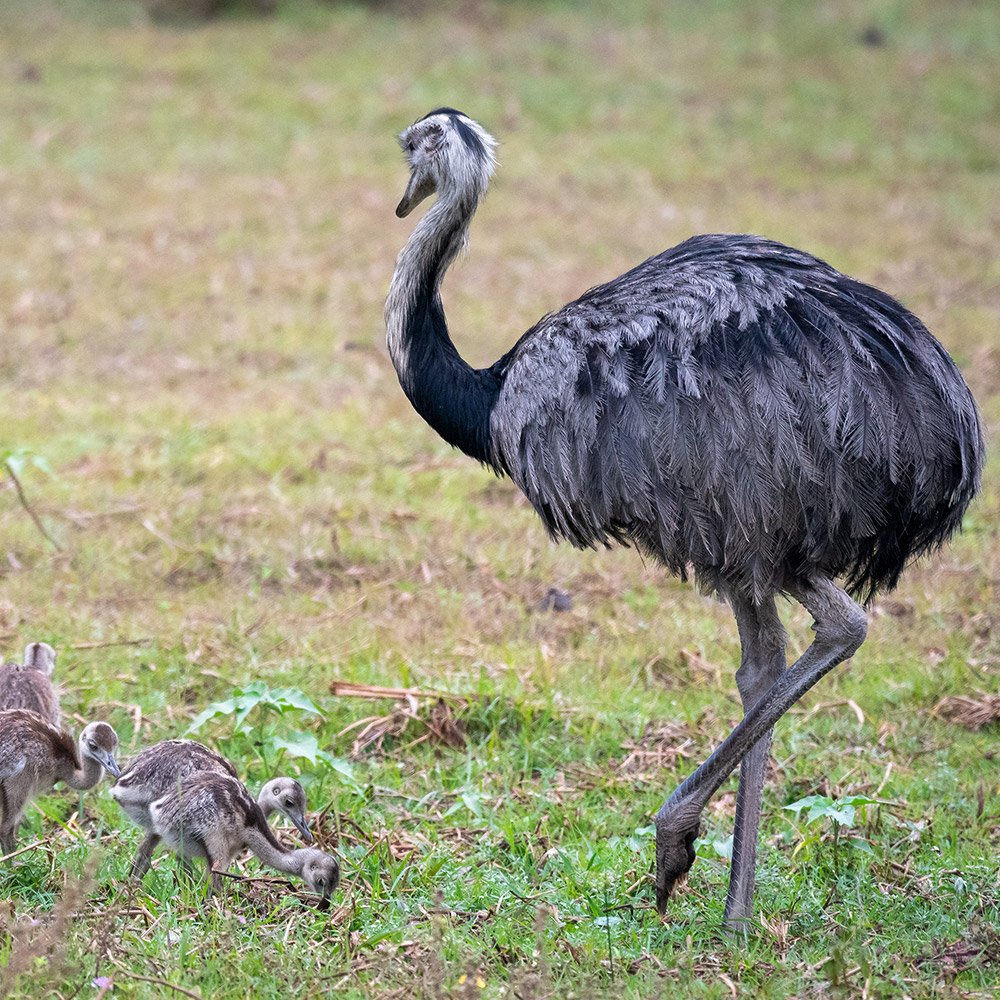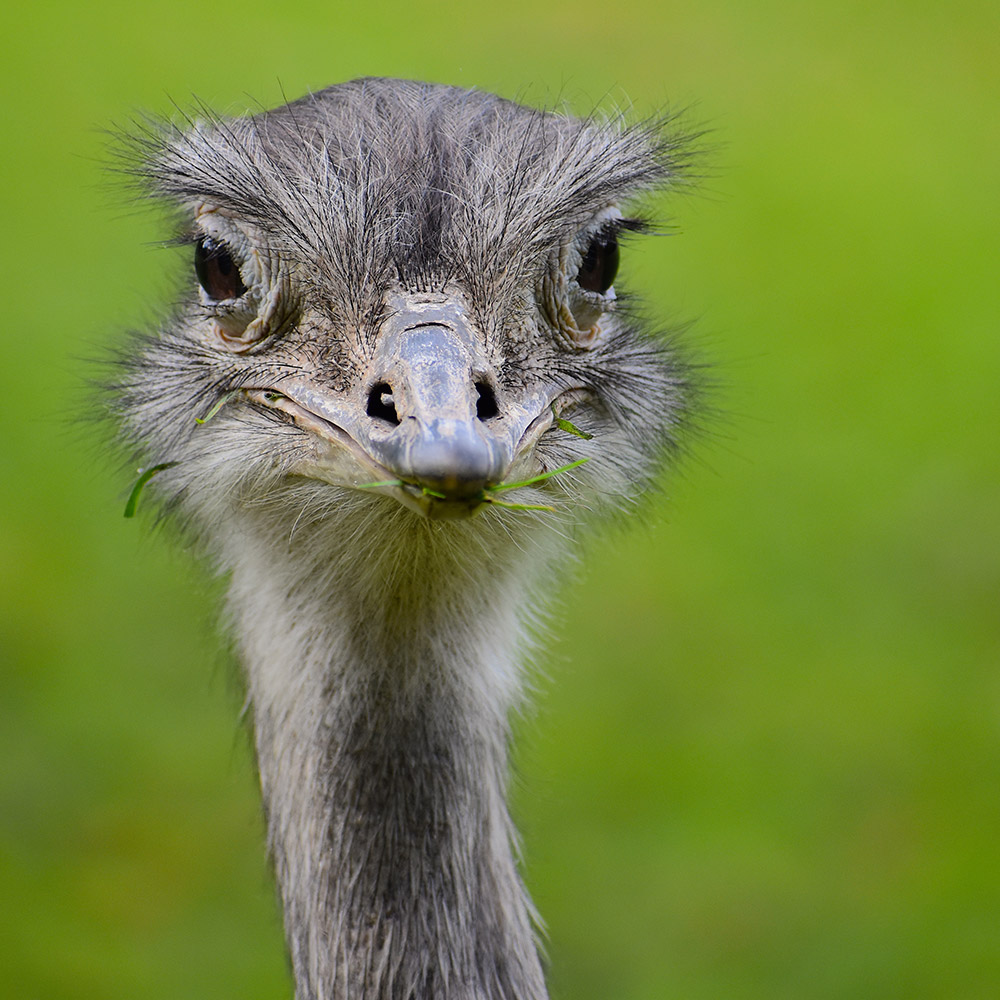
Habitat
The Greater Rhea is originally from South America, and can be found roaming the open and sparse woodlands of Argentina and Brazil.

Diet
Greater Rheas are opportunistic eaters. They like plants, fruits, and seeds but also eat insects, lizards, and birds. The birds particularly enjoy agricultural crops such as wheat.
Fun Fact
The Greater Rhea (Rhea americana) is the heaviest of all South American birds. It stands at 1 to 2m tall and is related to emus and ostriches.
Lifespan
The average lifespan in the wild is 15 years.
Unable to fly, these birds use their long, powerful legs to outrun trouble, while using their large wings for balance and to change direction as they run.
Population: Declining, mainly due to hunting pressures.
Behaviour: Rheas are social birds which flock together. They are often found with other large animals such as deer, who form a mixed herd.
Males incubate eggs laid by a number of females for up to six weeks. Incubation can vary and most eggs will hatch simultaneously. Males can brood up to 20 young and guard their young aggressively, charging any animal, even a female rhea which gets too close.
More of our animals you may like to meet
Subscribe to our newsletter
Stay up to date with all that is happening at the park and receive exclusive offers and news.
You can unsubscribe at any time by clicking the link in the footer of our emails. For information about our privacy practices, please visit our website.
We use Mailchimp as our marketing platform. By clicking below to subscribe, you acknowledge that your information will be transferred to Mailchimp for processing. Learn more about Mailchimp's privacy practices



